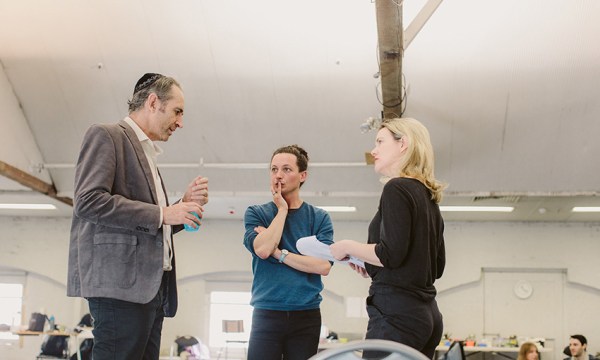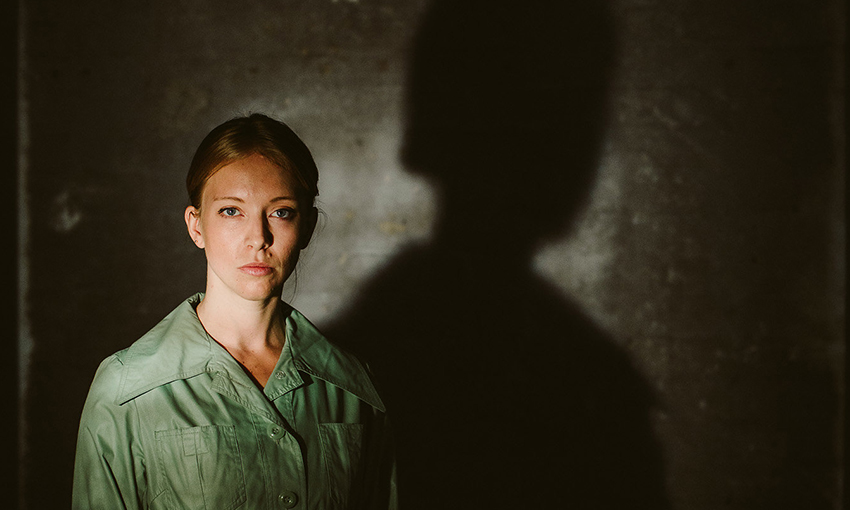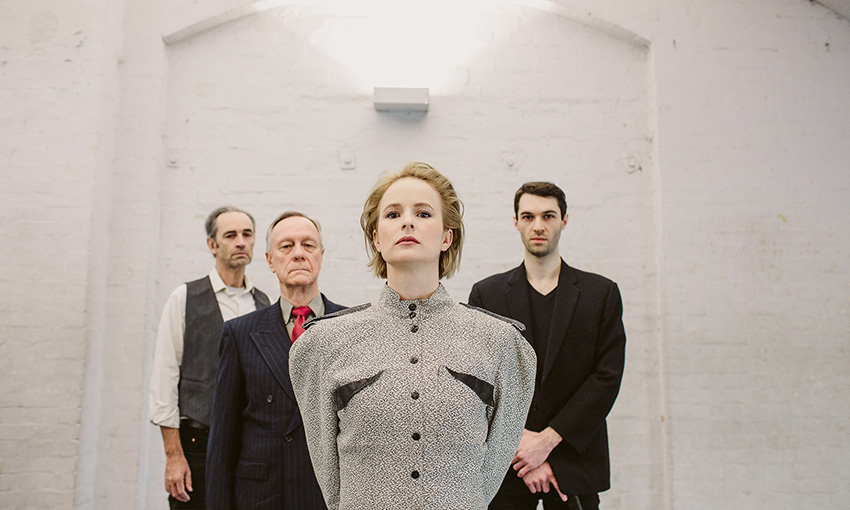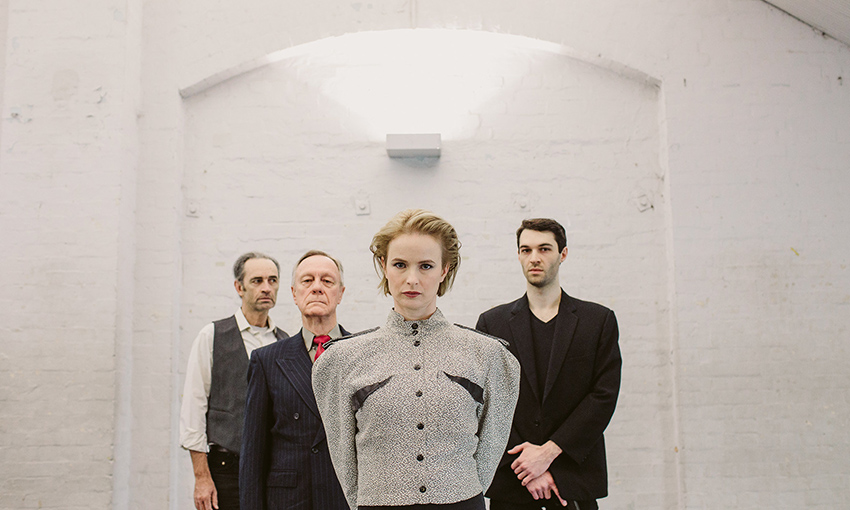Theatre is one of the most entrepreneurial industries – testing its product live, with an instantaneous feedback loop.
How to successfully create a start-up in the arts
Charles Sanders is an entrepreneur by any measure. House of Sand is Charles’ second theatre company and he’s only just nudged over the age of 30.
Welcome the Bright World
20th Sep — 6th Oct 2018
Queen’s Theatre
Adelaide SA 5000
For more details and to buy tickets click here.
His sister, Eliza is the co-founder and co-artistic director of House of Sand and next week – together with State Theatre Company of SA – they launch a season of 35-year-old play Welcome the Bright World by Australian playwright Steven Sewell. It’s ambitious, it’s innovative, it’s risky – and that’s just CityMag’s review of running an arts business in 2018 – let alone putting on a huge production inside the Queen’s Theatre in Adelaide’s West End.
We caught up with Charles to learn more about what makes him tick and how you can build a successful arts start up into a fully-fledged business.

Charles Sanders (centre) at rehearsals for Welcome the Bright World
You trained and performed as a classical boy Soprano – this sounds amazing. Did you start singing at church?
God no! I’m a born and bred atheist (one of the reasons that questions of religious identity are so confounding and endlessly fascinating to me) but I was lucky to go to a school in Canberra called Ainslie Primary, which at the time (in the mid 90’s) had an elite music programme run by the Canberra School of Music – a public school mind you, back in the days when we funded such things properly in this country! We had an amazing Hungarian singing teacher called Piroska Varga who ignited my love of music and singing, and pushed me to pursue that passion.
You started your first theatre company, Early Worx when you were just 22 years old. Tell us why you thought it was a good idea.
When you put it like that it sounds quite amazing, and perhaps it was, or we were just insane. When I graduated from AC Arts in 2010 I didn’t want to sit on my bum and wait for the phone to ring, and to be honest I’d just spent three years discovering that I was probably not cut out for a profession in acting. I knew that I wanted to direct, and so I thought ‘why not just make some things?’
Two other things fed in after that: One was that I was working at Higher Ground and they were looking for a resident theatre company, and the second was that I wanted to set up some structures to allow new graduates in perpetuity to be able to do as I was doing, and make work – but without all the admin of setting up a new entity. The unfortunate end (and preventable: “grr” to arts funding in this country) of Higher Ground in 2013 kyboshed the perpetuity idea – it just would have been too expensive without a residency. But I’m so proud of the work we made at Early Worx and the opportunities we provided for young and emerging artists. It was a truly magical couple of years, and we were able to do it all on the smell of an oily rag thanks to Higher Ground’s support (and an energy level I couldn’t muster now on my most caffeinated days).
What did you learn through your first start-up?
Do. Everything.
There’s nothing more valuable in the arts than someone who can jump into a variety of roles. You won’t be great at all of them of course, but it’s a brilliant experience, and an invaluable way to learn respect for your collaborators both on and off stage. It also teaches you just how much work goes into this business we call ‘show’.
And punch above your weight. We got so much official and un-official feedback from potential funders and partners which said ‘we don’t believe these guys have the experience to pull this off,’ but we did it anyway – pushing ourselves way outside our comfort zones, and all of those artists (myself very much included) grew and transformed more than we ever possibly could have if we’d played it safe.
And you’re not limited to Light Square’s establishments and venues. You’ve since travelled and worked near Times Square in New York. Tell us about Paul Lucas Productions.
That was an amazing experience. I’d met Paul when he brought Taylor Mac out to the Feast Festival, and he was working on a play right up my alley – Trans Scripts – a verbatim piece about the experiences of a broad cross section of trans men and women. I received the Neil Curnow award from the Helpmann Academy, which is specifically for international PD, and as a genderqueer person, I knew I had to wangle myself into Paul’s inner circle and onto that project.
In the end I directed a development and the first draft showings. That engagement lasted almost two years, and I met and worked with the most amazing artists. We did the development in New York and New Jersey on my first trip, and then a second trip took us to the UK for the first draft production. We performed on the West End (in the function room above a theatre, but still!) and I made lifelong friends and learned so much. I was at NIDA the year it premiered, and Paul rightly needed a new and more experienced first mate, but the show (with a wonderful American director by the name of Jo Bonney at the helm) went on to win a bunch of awards including a Fringe First in Edinburgh and we’re still talking about eventually bringing it to Aus.
And that is the only other piece of advice I’ll give to young artists out there: TRAVEL! Work all over the world, you will never get the same knowledge if you stay inside your own culture.

Actors!
Are there big differences between Australian and US theatre experiences?
Yes and no, we’re so globalised that much of the content is eventually pretty similar, but the working experiences are different. Most American actors are VERY set in the ‘Method’ or some version of it – psychological analysis, emotion recall, sense memory etcetera; where Aussie’s are more physical and impulsive.
What do you love about working with your sister Eliza with this new company? What is less good about working with family?
I’m very lucky: with my family, there is almost nothing bad about working with family. Eliza is an actual genius (albeit in a very strange way), and a profound thinker. We fight like cats and dogs but there’s never any love lost (although we occasionally terrify collaborators with our fights – we’re working on not doing that!). The greatest thing about working with family and very close friends is that – if the relationship is right, and tended carefully – you never have to pull any punches. There’s a baseline love and respect that goes beyond any individual instance of “that was an idiotic choice” or “you sucked today in rehearsal”. I have that closeness with my composer Mario as well, some friends are as good as family, and those two artists – Eliza and Mario – are about 80% of the reason I’m still working, and they keep me constantly improving.
What’s in this play – Welcome The Bright World that made you want to re-look at it in 2018?
About a million things! The nature of truth, identity politics, the rise of the intelligence state, data security, the changing dynamics of family.
When I re-read the play in 2015 in Berlin I was almost scared by how prescient it seemed, and that feeling only got more acute with the rise of Right Wing Undemocratic Populism around the world, this increasingly fundamentalist obsession with identity politics on the left, Russian hacking, rigged elections, and to top it all off you started hearing things like ‘alternative facts’ ‘post-truth’ and ‘fake news’ everywhere. It continues to astound me: the play’s central questions are “what is truth? Can humans know it? And if so, what is it’s moral character?” and on our first day of rehearsals I woke up to the bewildering, and equal parts terrifying and hysterical, clip of Rudy Gilliani saying “Truth isn’t Truth.” I thought “Forget 1984!” Speculative fiction gets it so wildly wrong so often, but simply looking to our true past can reveal the present and future to us with such brilliance. That’s what this play does for me, and I hope for audiences too.
Queens Theatre is a venue that really has more personality than most, will you be using the venue as part of your mounting of the play in any specific way (other than a shell to hold the audience and actors)?
Absolutely we will. I’ve seen so many great shows in the Queen’s and always loved how people use the amazing architecture and ambience of the space. The first time I took my production designer, Karla Urizar, to see it she was blown away – between us we had this idea (it was probably hers to start with) that we’d build a ruin of a lush old interior of what the space might once have looked like – the layers of history crumbling away, reminding us of the layers of the past that sit under every present moment. We were inspired by the ruins of the Kaiser Wilhelm Memorial church in Berlin, which remains un-reconstructed to this day, as a memorial to the second world war. That day, We went to La Moka and sat upstairs for six hours and had the design basically complete in one day – and it’s all about featuring the Queen’s!
How big is your cast?
Between five-foot-four and six-foot, and slimmer with every passing, gruelling day of rehearsal. Hah! No, but seriously.
Seven actors. Which is massive these days outside a State Theatre Co. I’m fascinated and compelled by sprawling, multi-plot plays, and this is just that, but it requires a huge team. As well as the actors there’re three designers, Eliza choreographing and assisting me, and about ten other production team members. I probably don’t need to say how amazing I think they all are, but they really are!
One thing that is particularly fun and interesting – Terence Crawford, who’s playing the central role of Max, has actually played it before. In 1984 NIDA did a student production, and Terry was in his third year and nabbed the lead. It’s amazing to work with an actor on a role for the second time – the level of knowledge he brings to the work is absolutely astounding.
What makes theatre really ‘hum’ in 2018.
If I knew that I’d probably quit! Trying to figure it out is why I keep doing this mad job.
I have a sneaking suspicion that it still has, and always will have, something to do with shedding a particular, unique light on some facet of the human experience, but I don’t think it’s about form. New technology can be fantastic or fucking awful and trite, audience participation the same, everything else has been grist for the mill since Wagner and the ‘Gesamtkunstwerk’ concept. I don’t see any evidence that formal innovation makes the best theatre, or the worst. Personally, my theory used to be alternative space and unorthodox audience experiences where the key – back when Ontrerent Goed were the hottest ticket in Adelaide, and when I saw Sleep No More in New York . But then two of the best shows I’ve seen recently have been old-fashioned textbook naturalism – The Father and The Children both at STC in Sydney – and then tomorrow some crazy installation piece will come along and blow that theory out of the water too.
At House of Sand we make theatre that brings the bodily experience into equal importance with the intellectual one. We think that’s an important part of shining light on the human experience, something that makes a show ‘hum’. But part of the beauty of what we do in the theatre is that (to steal a phrase) it’s a ‘broad church’ and tastes will differ. So I suppose it’s up to the audience!
fin.







